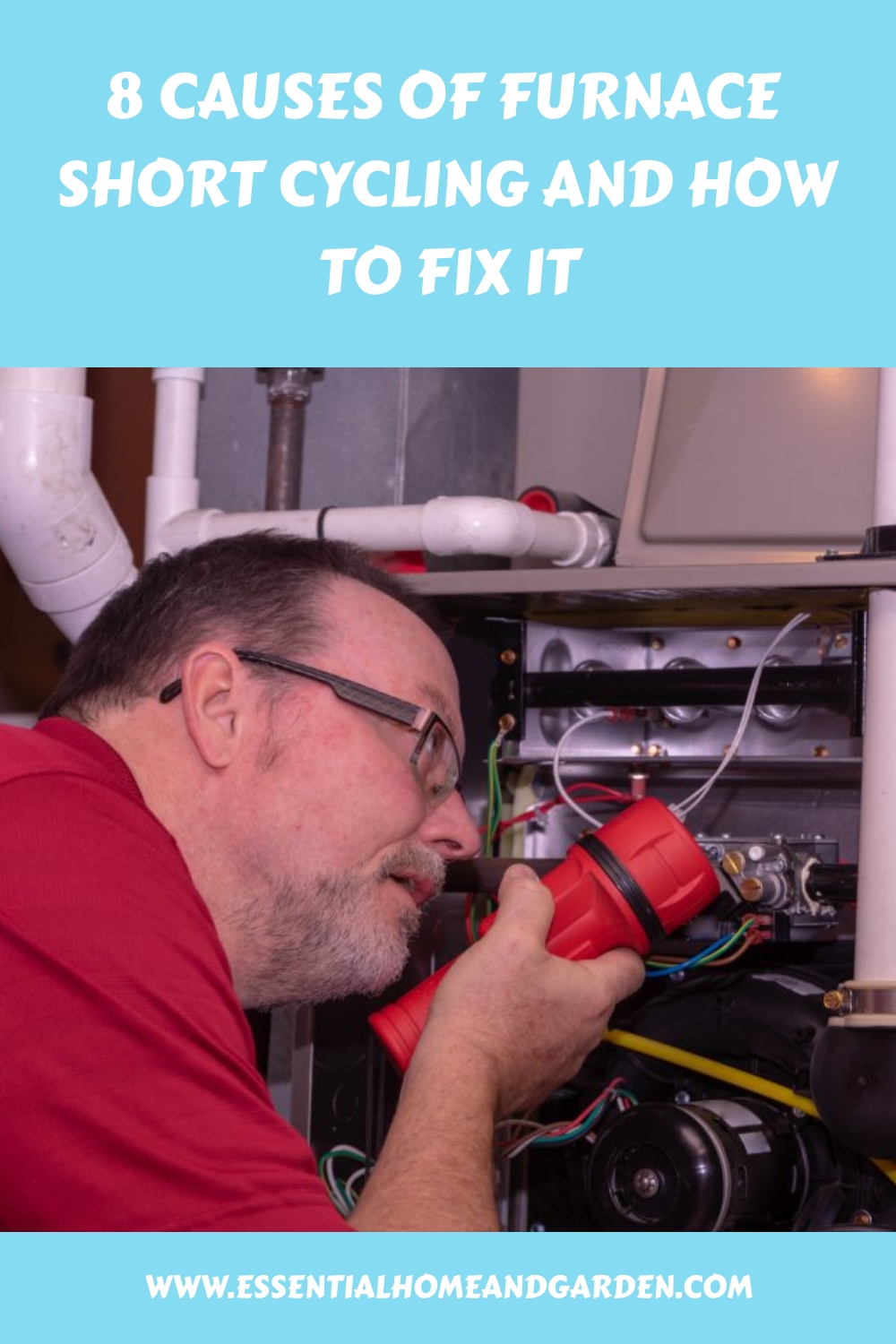When your furnace rapidly starts and stops without completing a full heating cycle, you’re likely experiencing a problem called short cycling, a common issue that impacts efficiency and heating performance.
If you think your home’s furnace is short-cycling, several things could be causing it. To learn how to diagnose a short-cycling furnace and what you can do to fix it, continue reading!
The Important Stuff:
- Furnace short cycling is identified by frequent starts and stops of the furnace, running for less than 3-5 minutes, and can lead to uncomfortable temperature fluctuations and increased energy bills.
- Common causes of short cycling include thermostat problems, incorrect furnace size, inadequate airflow due to dirty air filters or blocked vents, and issues with the flame sensor or flue.
- To fix short cycling, check and correct the thermostat settings, ensure the furnace size matches the home’s heating requirements, maintain clean air filters, and clear any obstructions from vents and flues.
- Regular maintenance is essential to prevent short cycling and its associated risks, such as higher energy costs, undue wear and tear on the furnace, and potential safety hazards like fire or carbon monoxide exposure.
- If simple fixes like replacing the air filter or adjusting the thermostat do not resolve short cycling. In that case, it’s important to consult a professional HVAC technician to diagnose and repair the underlying issues.
What Is Furnace Short Cycling?
You can recognize a short cycling furnace by observing how frequently the furnace starts and stops. If it’s turning on and off more often than usual, or running for very short periods, typically less than three to five minutes, it likely indicates short cycling.
You may also notice uncomfortable temperature fluctuations in your home and higher energy bills.
When this happens, you’ll notice several unwanted side effects:
- Your home will almost always be too cold
- Your gas bill will skyrocket
- Your furnace will experience undue wear and tear, leading to future mechanical failures
Why it Matters
While a short-cycling furnace may not seem like a big deal, it is far from ideal. It takes considerably longer to heat your home since the system kicks on and off repeatedly without reaching the set temperature. In many cases, it never heats your home to a comfortable temperature.
Additionally, the frequent on-off cycles cost more money because the system uses more energy. Starting up and turning on uses over 50% more energy than running steady for a lengthy period.
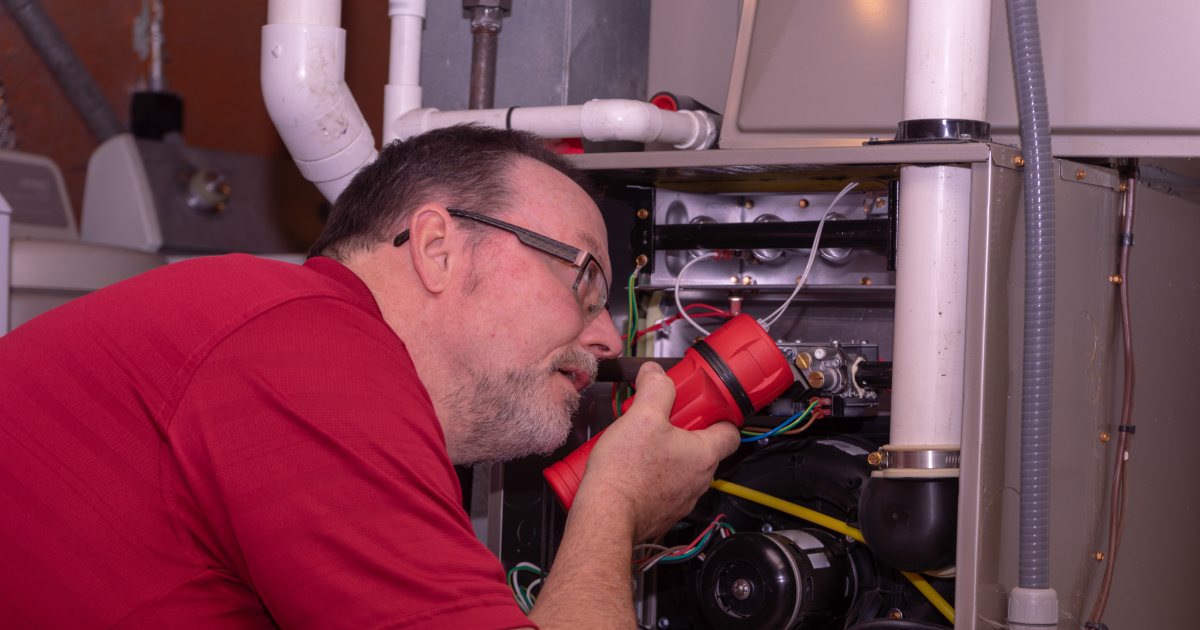
Common Reasons for Short Cycling
Your home’s furnace could be short-cycling for several reasons. While some issues are quick and easy to fix, others are more serious and require considerable amounts of work. Some cases will even need help from an experienced HVAC technician.
If your home’s furnace is short-cycling, here are potential reasons and how to fix them:
Thermostat Problems
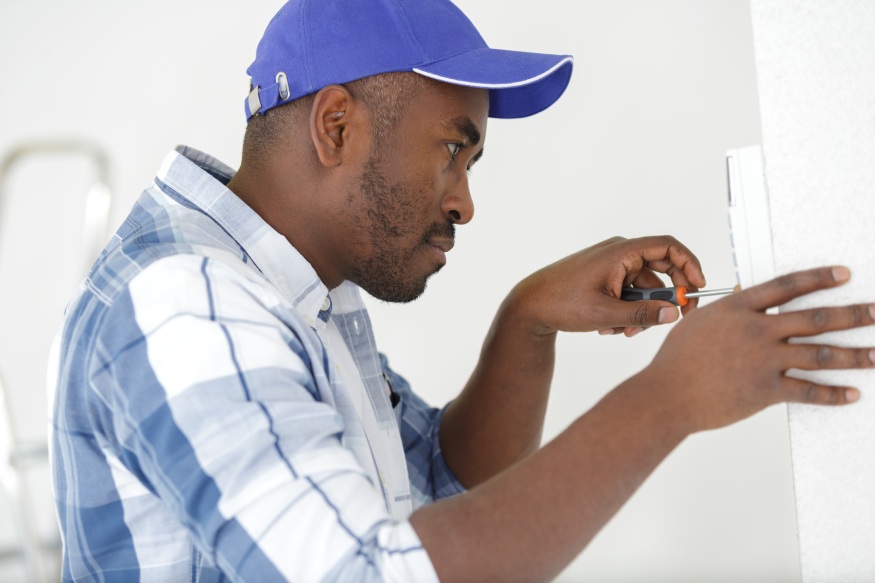
Proper thermostat function is crucial in controlling your furnace’s operation. An incorrectly set thermostat or weak batteries can easily lead to your furnace short cycling. It’s important to check the thermostat display for any low battery indicators or error codes that may suggest a malfunction.
Symptoms to Look Out For:
- Your furnace frequently starts and stops.
- Your home may not reach the desired temperature, leading to discomfort.
- An unexpected increase in your gas bill might also point towards this issue.
Common Issues and Quick Fixes:
- Incorrect Temperature Settings: Ensure the thermostat is set to the correct temperature.
- Battery Power: Replace thermostat batteries if they are weak or dead.
Ideal Thermostat Location:
- Position your thermostat away from direct sunlight or drafts for accurate temperature readings. Avoid placing it near heat sources like ovens or sunlight, as this can cause a false reading.
Thermostat Wiring:
- Inspect the wiring for loose connections or signs of damage. If you’re not familiar with electrical work, consider enlisting the help of an HVAC technician.
Solutions:
- If the thermostat display indicates problems, try replacing the batteries or resetting your device.
- If the thermostat is poorly located, move it to a spot away from heat sources and drafts, or opt for a smart thermostat for more precise control.
- Wiring repairs or thermostat replacement may be necessary, preferably performed by a professional to ensure safety and compliance with your system’s requirements.
Wrong Furnace Size and Installation
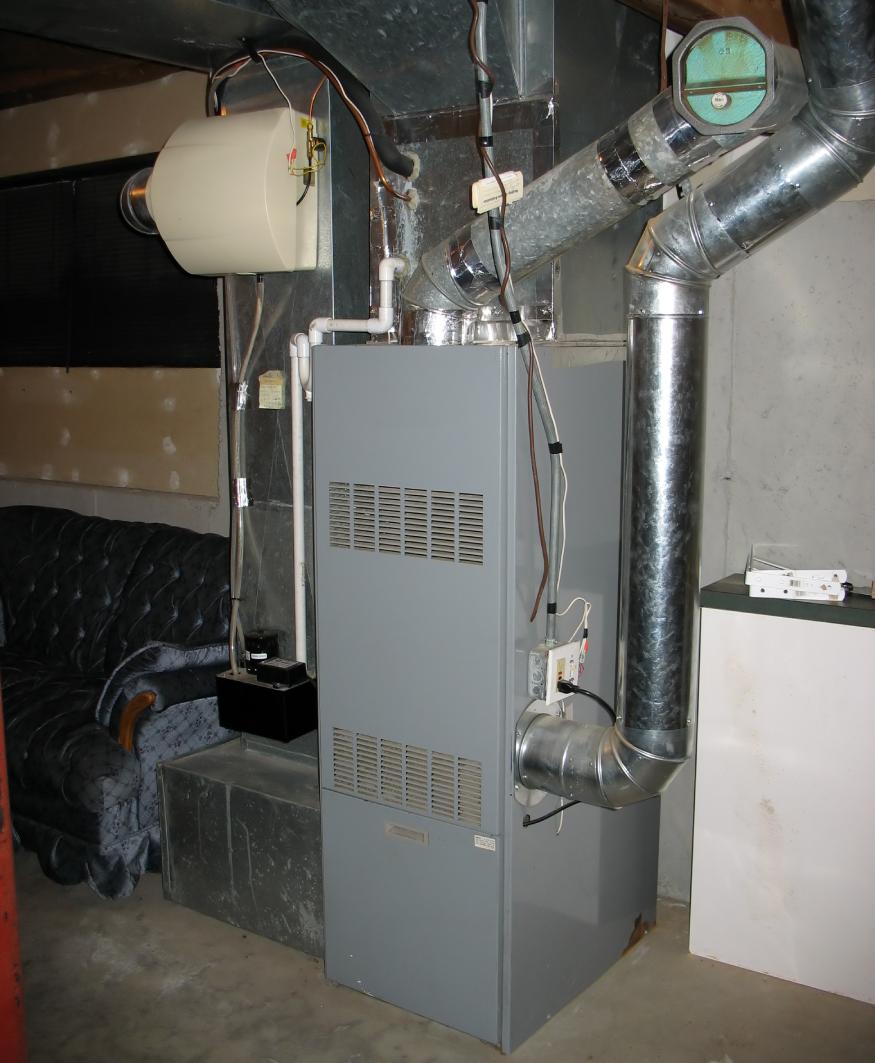
When your furnace size does not match your home’s requirements, it can lead to a condition known as short cycling. Here’s what happens:
- Oversized Furnaces: A furnace that’s too large for your space often heats too quickly and shuts off before your house warms evenly. It means your system starts and stops more often, which can cause excess wear and tear, leading to higher maintenance costs and uneven heating.
- Undersized Furnaces: Conversely, a furnace that’s too small will struggle to heat your entire home, running almost continuously and yet never quite reaching the desired temperature. This can also result in unnecessary stress on your system, as well as increased energy bills and decreased overall comfort in your home.
Symptoms of Incorrect Furnace Size can include:
- Frequent on-and-off cycling
- Loud or unusual noises
- Uneven home temperatures
- Hot air blasting from vents, despite insufficient overall heating
To diagnose Furnace Size Issues, check the following:
- The size and output of your furnace
- Home size and insulation quality
- Thermostat placement and settings
- Air filters and vent condition
If you suspect that your furnace may be improperly sized, the most effective solution is to consult an HVAC professional. A technician can calculate the correct size based on various factors of your home and can assist with installing the proper furnace.
Remember, safety issues like fire hazards, carbon monoxide exposure, and electrical risks are significant concerns with short-cycling furnaces. Ensuring proper furnace size and installation can help prevent these dangerous situations, alongside regular maintenance and inspections.
Inadequate Airflow (Dirty Air Filters)
When your furnace frequently starts and then stops, it’s often a sign of inadequate airflow. An airflow issue can cause your furnace to work harder than necessary, potentially leading to overheating and short cycling.
Common Causes:
- A dirty or incorrectly installed air filter can severely limit airflow. Ensure your filter is the correct size and type for your furnace to prevent blockage.
- Blocked or damaged air vents prevent warm air from dispersing through your home, causing the furnace to cycle more often. Make sure vents are open and clear of obstructions.
- Leaky or poorly designed ductwork compromises the system’s efficiency, leading to variable temperatures and possible short cycles.
Recognizable Symptoms:
- Your furnace may be noisy, turning on and off more frequently than normal.
- Temperature inconsistencies in your home, with areas feeling too chilly.
- An unusual increase in your energy bills could indicate your furnace is running excessively.
Diagnostic Checks:
- Inspect your air filter regularly. If it’s clogged, clean or replace it monthly.
- Examine air vents to ensure they’re not covered or obstructed.
- Look at the ductwork for any signs of damage or poor insulation.
Practical Solutions:
- Stay on top of filter maintenance; clean or change it monthly.
- Maintain unblocked and open air vents, away from furniture or drapes.
- If you suspect ductwork issues, consider having it checked by a professional.
Poor Insulation and Lots of Leaks
These issues can cause heated air to escape and colder air to infiltrate your home, which in turn, makes your furnace work overtime to try and maintain a comfortable temperature.
To identify potential problem areas:
- Check around windows, doors, and for any visible wall gaps.
- Inspect seals around vents and ducts.
- Examine any outlets or ceilings for cracks and holes.
Once you find these leaks, you can take action to seal them with materials like:
- Caulk
- Weatherstripping
- Foam Sealant
- Flashing
It’s also a good idea to enhance your home’s insulation. This helps combat furnace short cycling and can lead to more balanced temperatures throughout your home and potentially lower energy bills.
Flame Sensor Problem
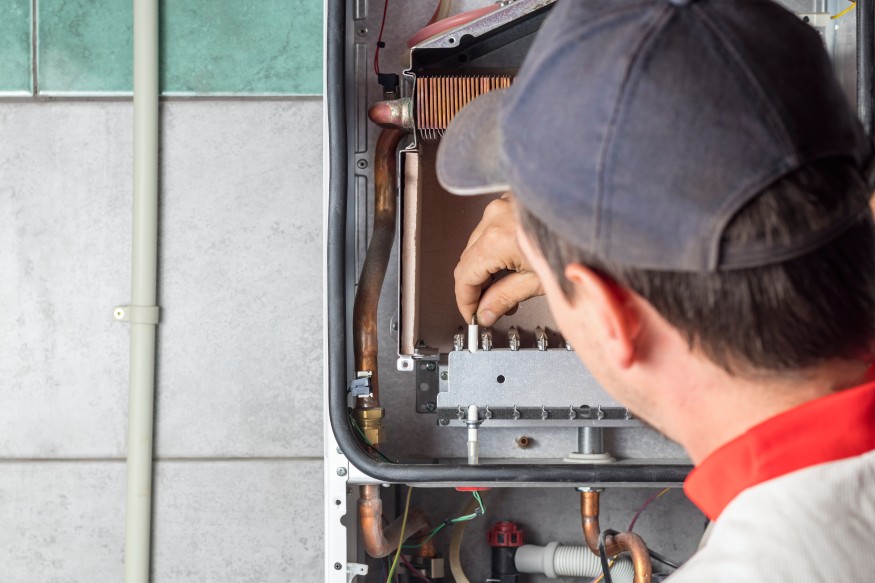
When your furnace keeps turning on and off, it might be a signal that your flame sensor needs attention.
This small, yet crucial, component continuously checks for a flame once the gas valve opens. If it’s coated in grime or corrosion, it won’t function correctly, leading to the premature shutdown of your furnace, a process known as short cycling.
Symptoms Indicative of a Dirty Flame Sensor:
- You may notice audible clicks from the furnace frequently cycling.
- Your living space may not maintain a consistent temperature.
- An unexpected increase in your gas bill, reflecting the erratic operation of the system.
Diagnosing the Problem:
- Inspect the flame sensor for any apparent buildup or soot.
- Watch the burner; if the flame is present but the system still shuts down, the sensor might be the issue.
Solutions to Address a Dirty Flame Sensor:
- Carefully clean the sensor using a soft cloth or fine-grit sandpaper to gently wipe away the accumulation.
- If the sensor appears damaged, consider replacing it to ensure your furnace runs smoothly.
- Sometimes, it’s best to call a professional HVAC technician for a thorough inspection and remedy.
Clogged Flue
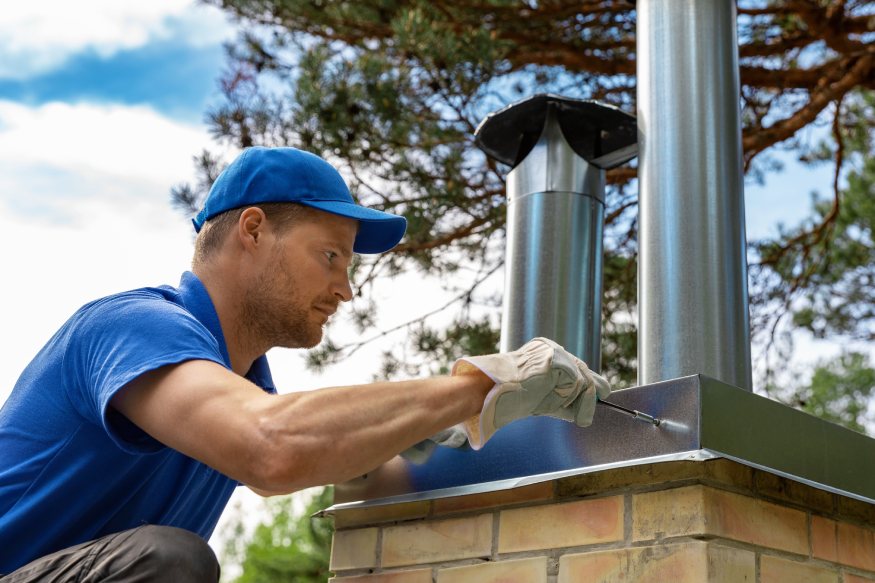
If your furnace frequently turns on and off, making loud noises, and your energy bills seem unusually high, you might be dealing with a clogged flue. This issue is a common cause of furnace short cycling, which prevents your furnace from effectively heating your home.
Here’s what’s happening: Your furnace’s flue is essential for safely transporting exhaust gases away from your furnace. When it’s blocked, it causes the heat exchanger to overheat. To protect your system, a safety device called a fan limiter may trip, causing your furnace to shut down.
Signs of a Clogged Flue:
- Frequent furnace cycling
- Unusual sounds from your furnace
- Unexpected increases in heating costs
- Insufficient heating in your home
To diagnose a clogged flue, check for visible obstruction like snow, leaves, or nests in the vent pipe. Inside the pipe, look for soot accumulation or corrosion.
Any damage to the pipe should be addressed immediately.
Diagnosis Checklist:
- Check for external obstructions
- Inspect for internal soot or corrosion
- Examine the pipe for any damage
Clearing the blockage is often the first step in resolving the issue. Tools like a wire coat hanger or plunger can help with minor clogs, but more stubborn blockages might require a drain snake or a water pressure device for resolution.
Remember, dealing with flue obstructions can pose significant risks, such as fire hazards or carbon monoxide exposure.
That’s why it’s crucial to conduct regular maintenance. If you’re not confident handling this issue or if you find extensive damage, it’s wise to call a professional to repair or replace the necessary parts and ensure your furnace operates safely and effectively.
Clogged Air Filter
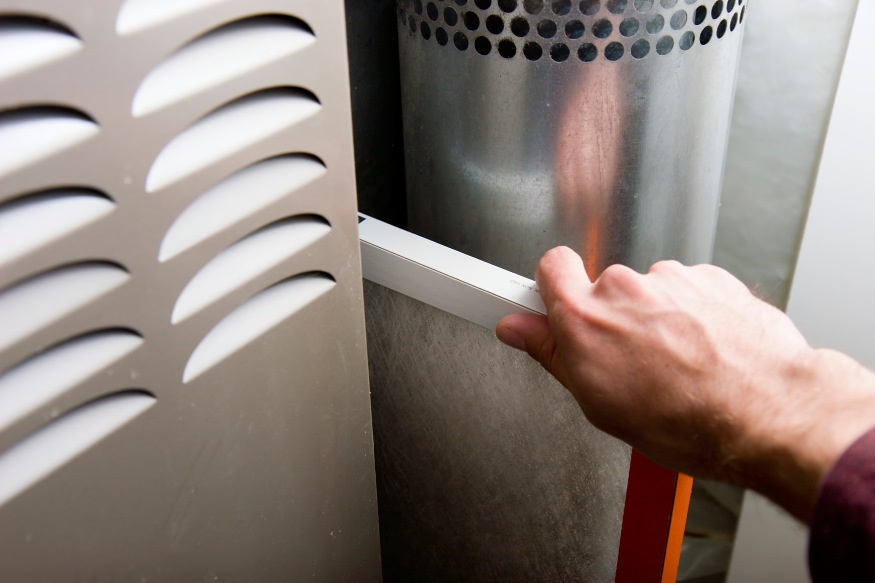
Good airflow is crucial in keeping your furnace running smoothly. Imagine the air filter as the furnace’s lungs, it needs to be clean to breathe properly. If it becomes clogged with dust and debris, airflow is hindered, causing your furnace to work harder and, potentially, overheat.
Recognizing the Signs:
When your air filter needs attention, you’ll likely hear the frequent starting and stopping noises of your furnace. It might be hard to keep your home at a comfortable temperature, and you might even see a spike in your energy bills. These are all signs that your furnace is cycling more than it should.
Spotting a Clogged Filter:
To check if your air filter is the culprit:
- Look at your air filter closely—if it’s grey and full of particles, it’s time for a change.
- Make a habit of inspecting the filter every month.
Preventing Overheating:
Modern furnaces often turn off automatically to prevent damage from overheating. This safety feature can kick in if a dirty air filter is causing poor airflow. Keep the air filter clean to help prevent these shutdowns and maintain efficient operation.
Simple Fixes:
To fix the problem:
- Clean or replace your air filter regularly.
- Ensure you’re using the correct size and type for your furnace.
Staying Safe:
Blocked airflow can not only cause short cycling but may also increase the risk of carbon monoxide build-up or even fire. Maintaining your air filter is not just about efficiency—it’s about your safety. By taking care of your air filter, you help take care of your home.
Overheating
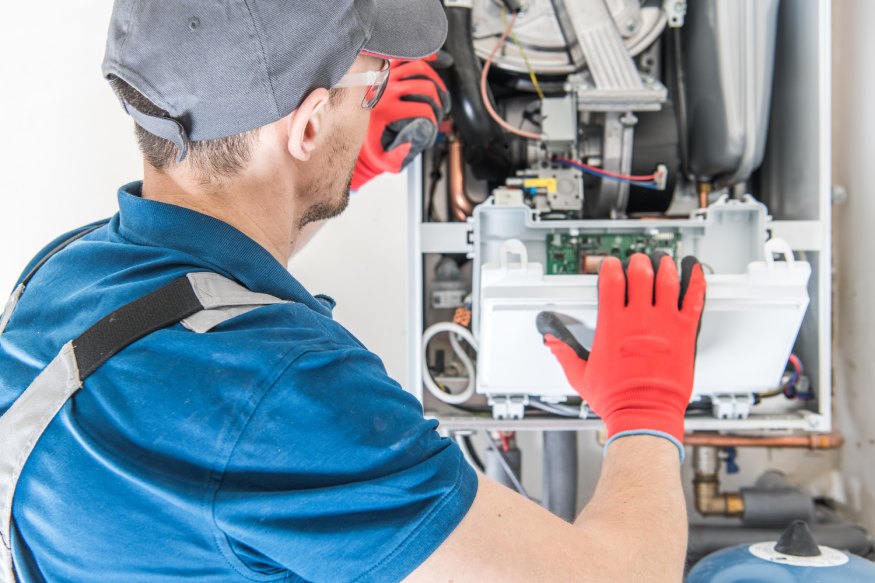
Overheating happens when the unit reaches a temperature that’s too high and a component known as the high-limit switch activates to shut it down.
Common Causes:
- A dirty air filter, restricting airflow
- Closed heat grates, limiting air distribution
- A blocked exhaust vent, causing poor ventilation
- A faulty thermostat, incorrectly gauging temperature
- Furnace size too large, leading to excessive heat production
Symptoms to Watch For:
- Short, repetitive on-off cycles
- Unusual loud sounds during operation
- Rising energy bills without clear reason
- Inconsistent room temperatures
- The house doesn’t stay warm
To determine if overheating is the problem, check:
- The condition of your air filter
- If heat grates are open and unobstructed
- The exhaust vent for any blockages or damage
- Thermostat accuracy and its location
- The furnace’s size in relation to your home’s requirements
Treating the root cause is key to solving this issue. Try:
- Replacing your air filter regularly
- Ensuring all heat grates are open and free of obstructions
- Inspecting and clearing the exhaust vent
- Checking the thermostat’s functionality and location
- Consult with a professional about the appropriate furnace size for your home
Remember, regular maintenance and inspections not only promote efficient function but also ensure safety by reducing the risks of fire, gas leaks, or carbon monoxide exposure.
Frequently Asked Questions
How Long Should a Heating Cycle Be?
An ideal furnace cycle lasts 10-15 minutes, with 3-5 cycles per hour needed to heat a home properly. Factors like extreme outside temperatures and high thermostat settings can increase furnace run time.
What Are The Signs of a Short Cycling Furnace
You may notice that the furnace kicks on and off repeatedly in a short time frame yet doesn’t run long enough to reach the proper temperature.
Your home may be cooler than usual, regardless of whether your furnace is frequently running. In that case, it’s time to look into the components that could be causing the furnace to short cycle.
How do I stop my furnace from short cycling?
The simplest possible fix is checking for a dirty furnace filter. Check and clean or replace the filter and see if the problem persists.
